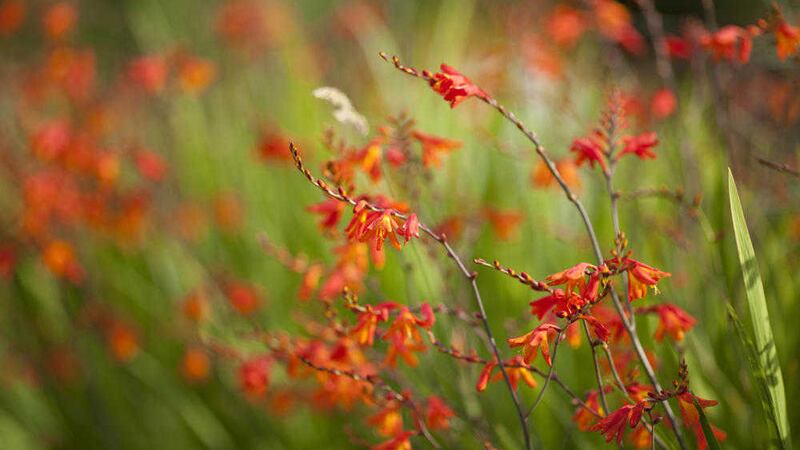I LIKEN crocosmia to dogs in that the species’ survival is helped greatly by the fact that humans love them. Formerly known as monbretia, this common perennial is not native to Ireland but loves the country's climate, particularly around the coast.
A plant that grows as well on road verges as it does in gardens, this member of the iris family originates in South Africa and is a hybrid of two species, crossed in France some time in the 19th century.
Montbretia took its name from French plant collector Antoine Francois Ernest Conquebert de Montbret. However, crocosmia – from the Greek ‘krokos’ meaning saffron and ‘osme’ meaning smell – is more widely used these days.
Crocosmia x crocosmiiflora is the common form that nearly every gardener in Ireland must have dug-up at one time or another and transplanted into their own garden.
Beyond its robustness and vigour, it has other attractions: it’s low maintenance; its upright, sword-like green foliage has plenty of architectural merit, and then of course there’s those eye catching orange flowers.
But it isn’t entirely benign. In New Zealand, for example, it is regarded as a weed and is controlled by the sort of regulations we apply to plants such as ragwort and dockens.
Its persistence has even caused a few headaches in my own garden, where it has been freely utilised in places where little else grows. Efforts to eradicate it more often than not prove fruitless, as a new plant will sprout from the smallest piece of corm and in a matter of years you'll have a clump – though you can always split it with friends, naturally.
If you insist on some crocosmia may I guide you towards the cultivars, which, as well as not being too invasive, will immediately set you apart from the commoners with bog-standard monbretia in their gardens.
The best known cultivar is C. 'Lucifer', which grows up to a meter and has vivid red flowers. One of the most popular crocosmias, this tall variety with flame-red flowers will bring atmosphere and drama to any garden.
Its Royal Horticultural Society's Award of Garden Merit (AGM) is as close as you'll get to a money back guarantee. 'Lucifer' is especially beguiling coupled with big white Shasta daisies, which will give those bright scarlet blooms additional impact.
'George Davison' is named after the head gardener at Westwick Hall in Norwich, who bred 13 varieties of the plant. It boasts the monbretia's trademark upright foliage but rather than red or orange, its flowers are yellow.
Also yellow but bigger than 'George Davison' is 'Rowallane', a variety bred at the eponymous Co Down garden.
With 'Golden Fleece'. you'll get regal, yellow flowers on arching stems, while C. pottsii 'Culzean Pink' is always guaranteed to scream loudest in any border.
The latter reaches up to four feet in height, flowers initially in June with a bloom like monbretia, however, as the summer progresses, the flowers fade to peach pink. It is well suited to pastel planting schemes and damp areas.
For two-tone flowers with yellow and red petals try 'Jackanapes', or why not the large vibrant orange and mahogany blotch flowers of 'Emily McKenzie'?
'Solfatare' has apricot flowers over brownish foliage.
Soil-wise, crocosmia is among the least fussy plants I know and while they will tolerate shade, it's best to locate them in full sun so they remain upright and produce more flowers.
Also, be wary of fertilising too much, as this will also make them flop outwards.









